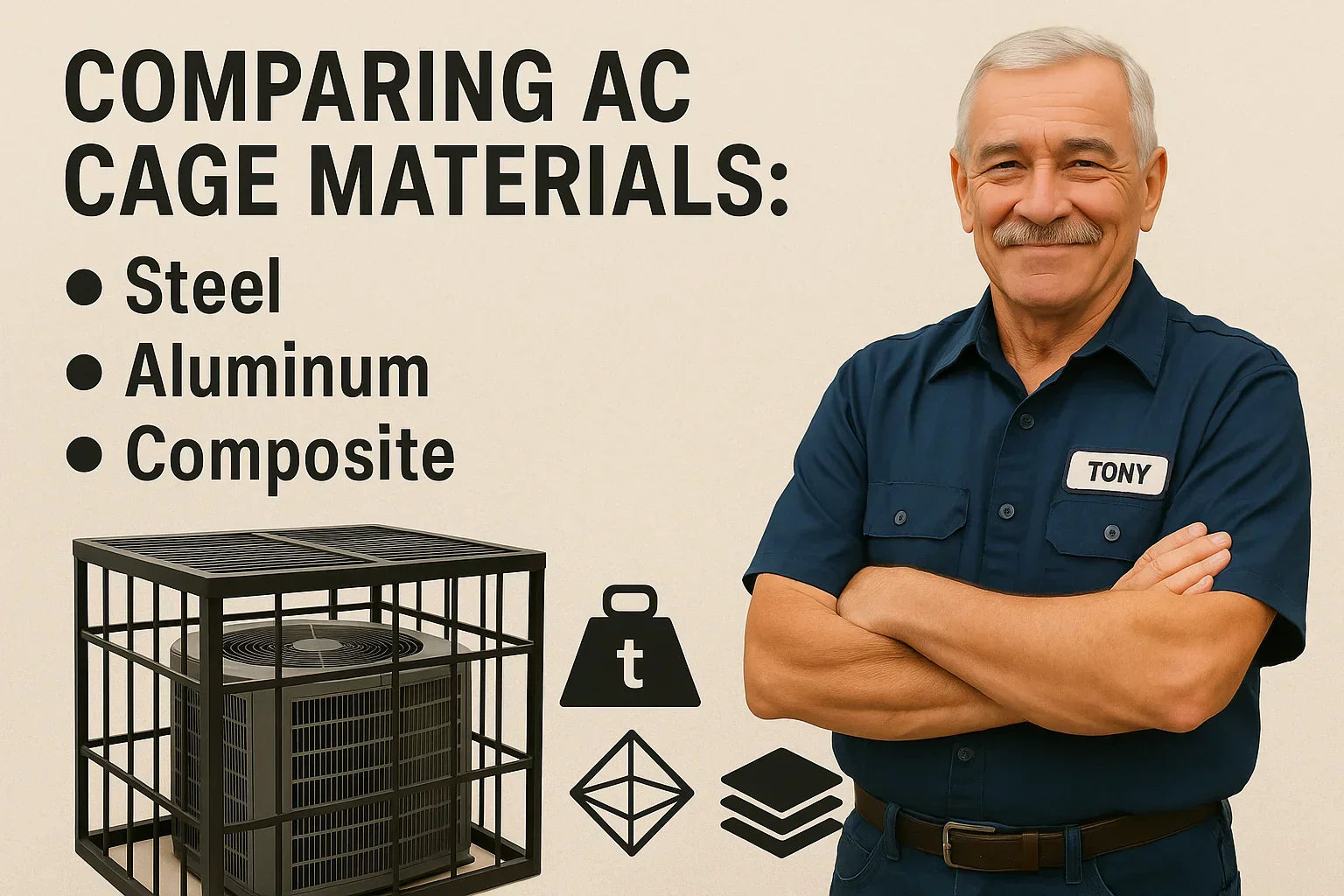When you're investing in protection for your outdoor air conditioner, the material you choose for your AC cage makes all the difference. In this detailed guide, we'll break down the pros and cons of the most common materials: steel, aluminum, and composite. We'll also explain why powder-coated steel—like that used in the T-Rex TREX4x4—offers superior long-term protection.
🔨 The Core Materials Compared
| Material | Durability | Corrosion Resistance | Weight | Maintenance | Cost |
|---|---|---|---|---|---|
| Steel (Powder-Coated) | Excellent | High (with coating) | Heavy | Low | $$ |
| Aluminum | Good | Excellent | Light | Low | $$$ |
| Composite/Plastic | Fair | Excellent | Very Light | Medium | $ |
💡 Steel: The Gold Standard for Security
Advantages:
-
Strength: Steel has the highest tensile strength of the three materials. It resists cutting, bending, and prying, which are common attack methods used by thieves.
-
Stability: Its weight adds stability against high winds and storms.
-
Longevity: With proper powder coating, steel cages resist rust and corrosion for decades.
-
Security Rating: Highest deterrent for theft and vandalism.
Disadvantages:
-
Heavier to transport and install.
-
Requires professional-grade powder-coating to prevent corrosion.
Why T-Rex uses powder-coated steel:
The TREX4x4's industrial-grade powder coating creates a sealed surface that prevents water infiltration, UV breakdown, and environmental damage.
🌊 Aluminum: Lightweight and Rust-Proof, But Not Invincible
Advantages:
-
Naturally corrosion-resistant.
-
Lightweight for easier DIY installation.
-
Requires less finishing than steel.
Disadvantages:
-
Lower strength makes it easier for determined thieves to cut or bend.
-
More prone to denting from debris or impacts.
-
High-quality aluminum cages can be significantly more expensive.
Use Case:
Aluminum works well in mild environments with minimal theft concerns but is less ideal in high-crime or hurricane-prone regions.
📏 Composite: Budget-Friendly, But Limited Protection
Advantages:
-
Inexpensive.
-
Naturally rust-proof.
-
Very easy to handle and install.
Disadvantages:
-
Weak structural integrity.
-
Vulnerable to UV degradation over time.
-
Easy for thieves to cut through.
-
Shorter lifespan (5-10 years).
Use Case:
Composite cages may serve as visual deterrents in low-risk areas but fail to provide robust physical security.
🔫 What Matters Most: Protection vs. Budget
When evaluating an AC cage, consider:
-
Your local theft risk: Higher crime areas demand maximum strength.
-
Weather exposure: Coastal and storm-prone regions need rust-resistant, heavy-duty protection.
-
Insurance incentives: Many insurers require high-grade security measures to qualify for premium reductions.
-
Longevity: A cage that lasts 20+ years ultimately saves money over cheaper short-term options.
🥇 Why T-Rex TREX4x4 Leads the Pack
The TREX4x4 is engineered for maximum real-world performance:
-
10-gauge powder-coated steel frame resists cutting tools.
-
All-weather coating for UV, moisture, and salt-air resistance.
-
Service-friendly design allows technicians to access the unit without removing the entire cage.
-
Secure bolt-down mounting keeps the unit stable during severe weather.
-
Sleek design satisfies most HOA appearance requirements.
Tony Marino's Take: "When it comes to protecting your $5,000+ condenser, don’t cheap out. Steel might cost a bit more upfront, but it saves you from the big-dollar headaches down the road."
🔧 Verified External Sources:
NBC News: Copper theft cases rise
FEMA Hurricane HVAC Equipment Protection
State Farm Insurance Discounts for Theft Prevention
In the next topic we will know more about: How to Measure Your AC for a Cage: Sizing Guide for a Perfect Fit







